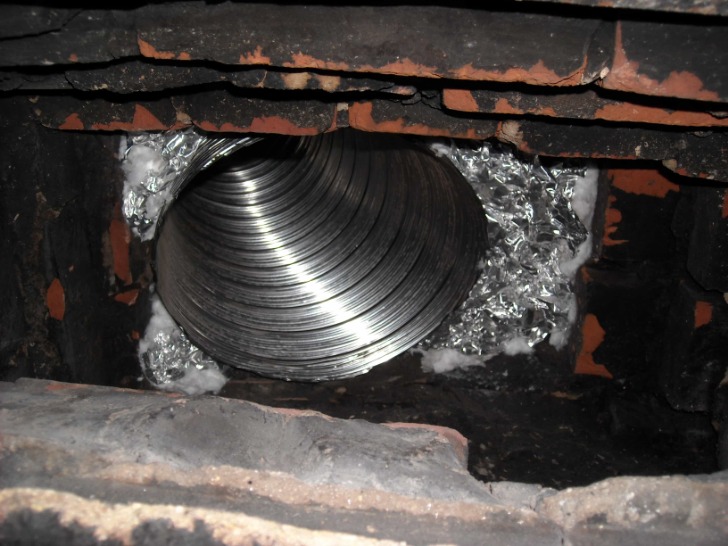Masonry chimney installations typically fall on the higher end of the price range because of the skilled labor required. Wood stoves and pellet stoves are smaller and more economical than traditional fireplaces. However, if your installation does not include a chimney installation, you can expect to spend an additional $1,000 or more to have a vent pipe installed.
Venting into a chimney that is too large allows smoke to cool quickly resulting in creosote, condensation, and sluggish draft. The flue is the opening in the chimney that allows for the passage of exhaust. The size of the flue is mainly determined by the size of the flue collar / exhaust opening on the unit you plan on venting. Heating appliances are designed and tested for the flue size that maximizes combustion.
Read more about Chimney Repair Los Angeles here.
Chimney flashing sits at the bottom of your chimney stack, where it meets the roofline. It is an important chimney component, protecting your fireplace from rain and water damage. The average cost for repairing chimney flashing is between $225 and $540. The chimney’s flue is the tunnel that provides ventilation to your fireplace, while also protecting your fireplace from decay and creosote buildup.
What does auto clean do in chimneys?
Take a look at our blog and find solutions and recommendations to help you with your fireplace or wood stove. Wood with 50% or 60% moisture content does not heat and burns very poorly, creates a lot of soot and gives off excessive water vapour. This will lead to harmful deposits on the appliance, on the glass and in the smoke channels.
What Makes A Good Chimney?
The chimney masonry acts as a strong and durable enclosure, guiding the byproducts of combustion safely out of your home. Typically built with bricks and sturdy mortar, the chimney must withstand harsh weather and continuous usage. Chimneys work by removing byproduct gases, like carbon dioxide, from the air. Its function is not to remove hot air but to instead remove hot gases from the heating unit used in your home. We all think of “fireplace” when we hear “chimney,” but any heat source that burns fuel (wood, oil, gas, coal) requires a chimney. Chimney pressure inside your house is affected by a few key factors and if not monitored or addressed can cause the draft and flow system to not work properly. Wind-loading is the effect on interior house pressures caused by the wind.
– Use walls
While this first function alone can help reduce creosote build-up in a chimney, it also helps the second function to be more effective. It is this second function that truly makes Co-Mate unique and sets it apart from the competition. In fact, the developers of the Co-Mate formula spent considerable resources developing and understanding this function for maximum effect. Animals such as bats, birds, squirrels, and raccoons often get trapped inside of chimneys. You’ll notice that you have an intruder either by the critter noises coming from your chimney or a noticeable blockage obstructing the flow of exhaust fumes. The average cost for a general chimney sweep is between $110 and $290, but special circumstances could make that cost increase quickly.
Your damper opens to release smoke out of your chimney and closes when not in use to keep cold air out of your home. A chimney damper costs between $100 to $435, including installation. Understanding the common signs of chimney masonry damage is crucial for ensuring the safety and efficiency of your chimney and fireplace.
A typical fireplace, with a single flue, will be less expensive to have cleaned. The average chimney sweep for a wood-burning fireplace costs between $155 and $195. Long winters feel much warmer with a roaring fire in the fireplace.
Cooking means using oil, butter, and other sorts of greasy elements. When you heat these items, the vapors that rise from your cooking pots usually are laden with oil and grease molecules.
